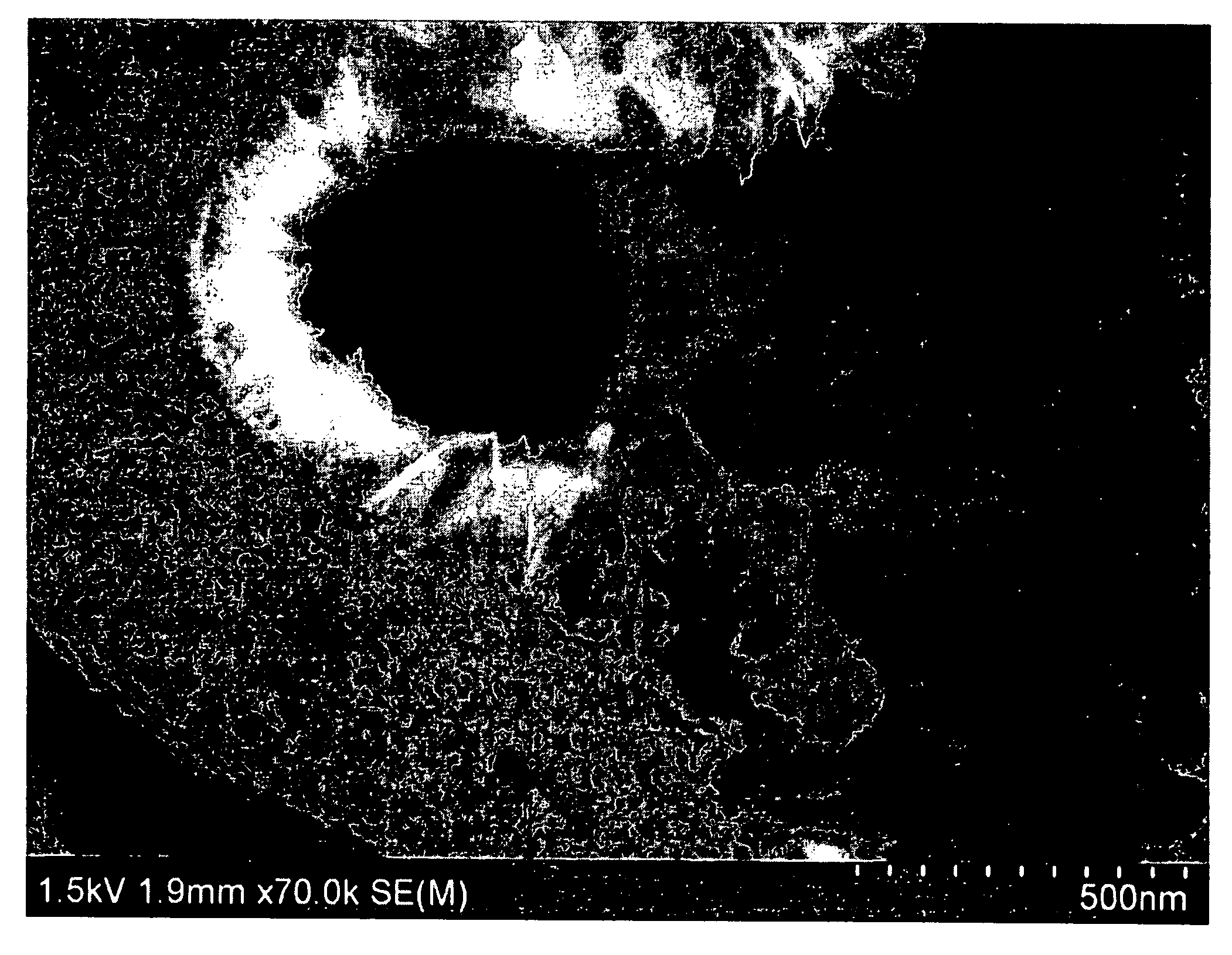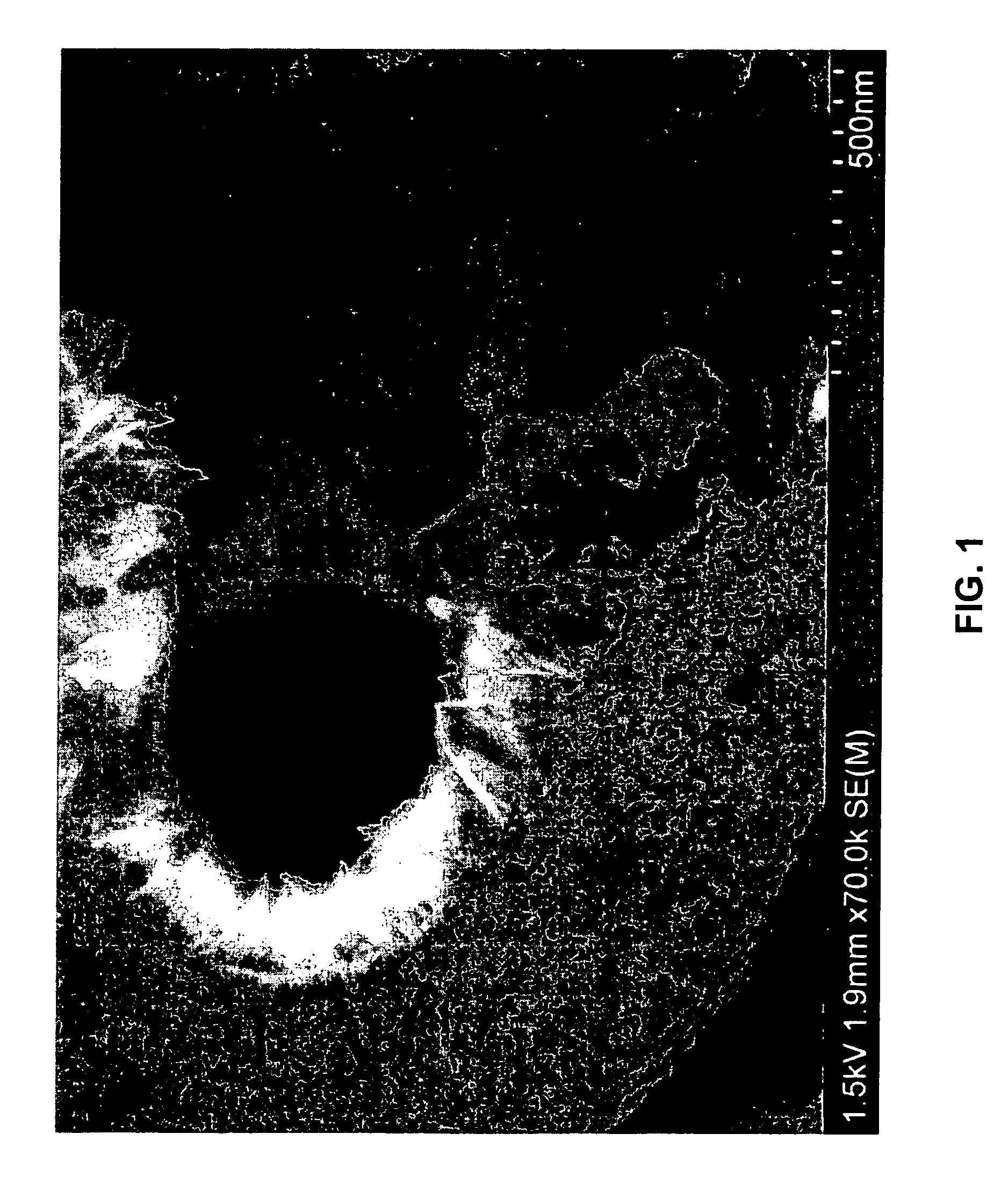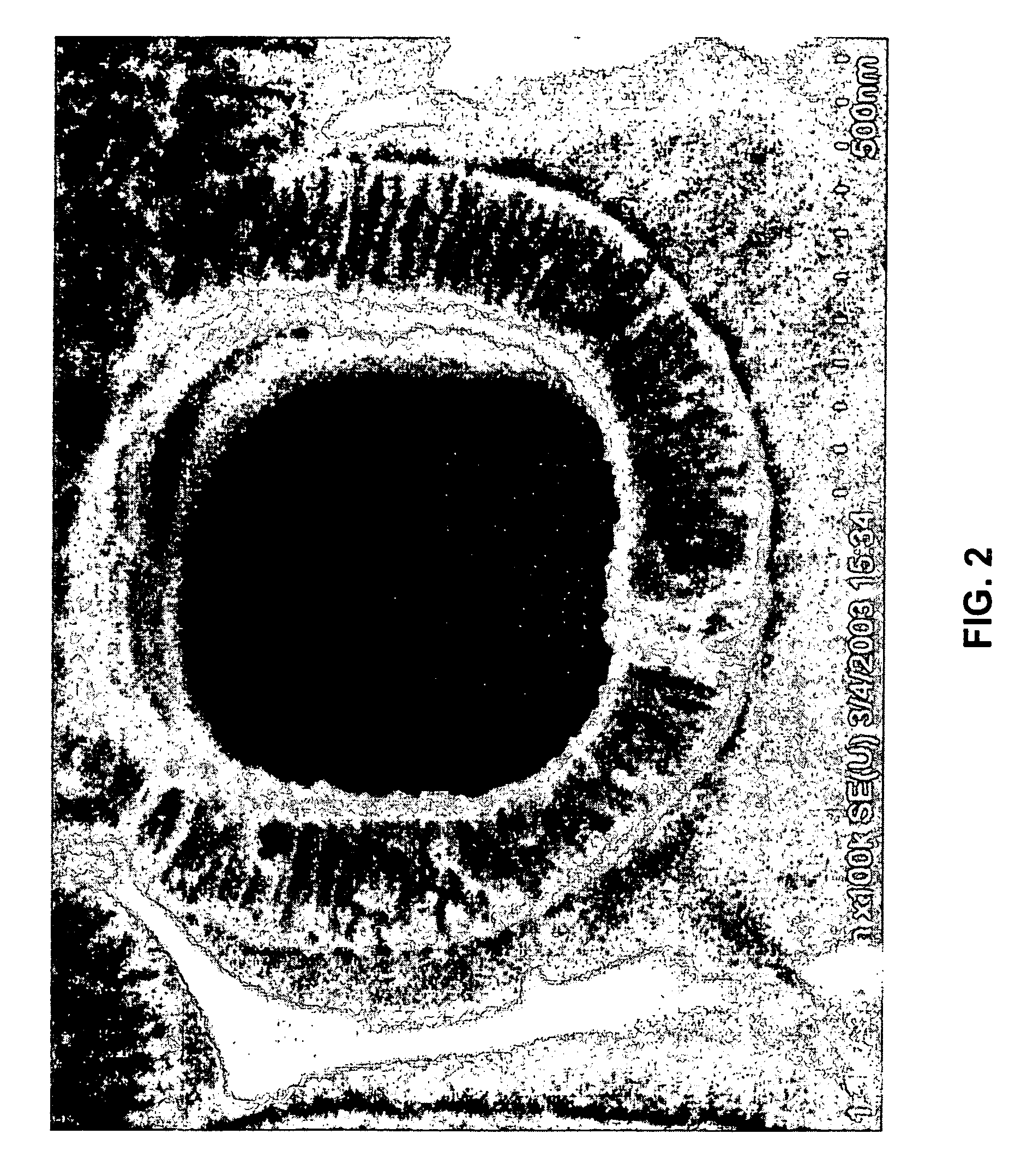Process for manufacturing high-stability crystalline anodic aluminum oxide for pulse discharge capacitors
a technology of crystalline anodic aluminum oxide and pulse discharge capacitor, which is applied in the manufacture of electrolytic capacitors, liquid electrolytic capacitors, electrolytic capacitors, etc., can solve the problems of pocket erosion at the somewhat curved corners of the device, the difficulty of packaging the capacitors in a small implantable device, and the patient who has a device implanted may be bothered, etc., to achieve high crystalline, save battery energy in icds, and high resistance to boiling water ramp
- Summary
- Abstract
- Description
- Claims
- Application Information
AI Technical Summary
Benefits of technology
Problems solved by technology
Method used
Image
Examples
example 1
Anodization of Aluminum Foil Prior to Photoflash Formation
[0073]Samples of 10 cm2 aluminum foil (having a dogbone shape) were taped at the neck to inhibit air / water line corrosion. The sample foils were anodized in a solution of 20% H2SO4 which was held at 15–20° C. by deionized water cooling and water jacket around a 1 liter stainless steel beaker. A current of 200 mA / cm2 was applied (2 A / 10 cm2 foil on both sides of the foil) for various times. The initial weights and final weights of the foil samples were measured. Results are shown in Table 1.
[0074]
TABLE 1Current DensityTimeInitial WeightFinal Weight(mA / cm2)(seconds)(grams)(grams)200600.40900.41122001200.40260.40702001800.40040.40642002400.40350.41142003600.40940.41912006000.35740.3699
Field Emission Scanning Electron Microscopy (FE-SEM) studies were conducted on the samples. Resolution of the porous oxide down to 5 nm pores was achieved and a layer of amorphous oxide with a thickness of 150–200 nm was observed in the 4 minute sa...
example 2
FE-SEM and XRD Studies of Anodized Foil
[0075]The 4 minute and 10 minute samples from Example 1 were further examined. Broken foil cross-sections of these two samples were studied using Field Emission Scanning Electron Microscopy (FE-SEM), which gave multiple measurements of porous oxide thickness of 170±20 nm for the 4 minute samples and 420±50 nm for the 10 minute samples. XRD analysis showed amorphous alumina with the only crystalline peaks belonging to the high cubicity aluminum substrate.
[0076]As seen in FIG. 7, the anodization rate calculated was approximately 40 nm / minute for anodization at an applied current of 200 mA / cm2, in 20% H2SO4, at less than 20° C., in the 4 to 10 minute range. This implies that about 12 minutes of anodization are needed at these conditions to reach an amorphous oxide layer thickness of about 500 nm for oxides formed to 485 V.
[0077]The XRD data seen in FIG. 8 for the 4 minute sample shows the broad peaks of amorphous alumina. All four sharp crystallin...
example 3
Heat Treatment and Hydration Effects on Anodized Foil
[0078]Samples of aluminum foil are anodized in 20% H2SO4 at less than or about 20° C. and 200 mA / cm2 for 12 minutes to get a porous oxide layer with a thickness of about 500 nm and 6 minutes to get a porous oxide layer with a thickness of about 200 nm, leaving some strength in the foil. A 2 minute-520° C. heat treatment is performed on some samples while a 12 minute hydration step is performed on other samples to test the effects of the heat treatment and the 12 minute hydration on the crystallinity and capacitance after formation of the foil to 450 Volts in citric acid. The rise time (tVn) of the formed foil samples after a 2-hour boil, the capacitance, and the dissipation factor (tan d) were measured for each sample. As seen from the results shown in Table 2, the capacitance obtained for samples that were anodized and hydrated were higher than the capacitance obtained for the sample that was anodized but not hydrated.
[0079]
TABLE...
PUM
| Property | Measurement | Unit |
|---|---|---|
| Temperature | aaaaa | aaaaa |
| Temperature | aaaaa | aaaaa |
| Temperature | aaaaa | aaaaa |
Abstract
Description
Claims
Application Information
 Login to View More
Login to View More - R&D
- Intellectual Property
- Life Sciences
- Materials
- Tech Scout
- Unparalleled Data Quality
- Higher Quality Content
- 60% Fewer Hallucinations
Browse by: Latest US Patents, China's latest patents, Technical Efficacy Thesaurus, Application Domain, Technology Topic, Popular Technical Reports.
© 2025 PatSnap. All rights reserved.Legal|Privacy policy|Modern Slavery Act Transparency Statement|Sitemap|About US| Contact US: help@patsnap.com



